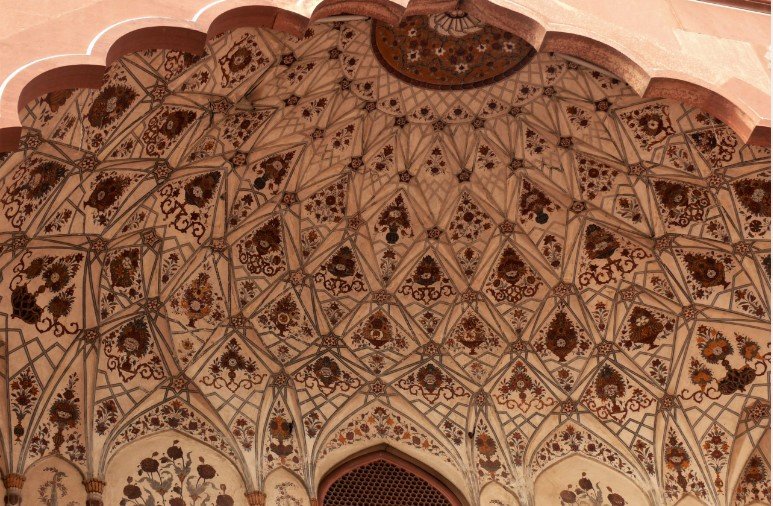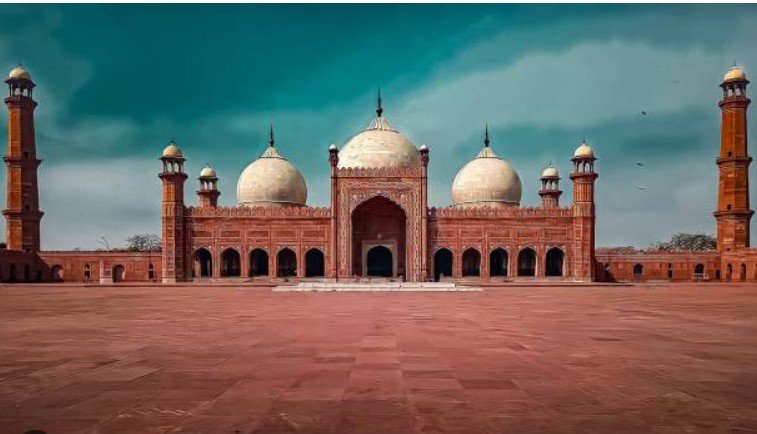The Magnificent Badshahi Mosque: Detailed History and Architecture – Masjid Badshahi – Lahore mosque
The King of all mosques in Lahore the Badshahi Mosque administered over the elevated place of being the world’s greatest
mosque for more than 313 years of all time.
The magnificence of the mosque can be articulated by the way that for the underlying 70 years after its advancement in 1673,
the mosque was basically known for its exceptional and extraordinary size which was obvious from practically ten miles away!
Apparently that the mosque was so gigantic some time ago in any case is! To be sure, even today this bonafide and consecrated
old unique case legitimizes itself as it stays with unprecedented miracle and grandness.
The Magnificent Badshahi Mosque:
Data about Badshahi Mosque

The improvement of the mosque was started in 1671 under the prosperous and blooming domain of the sixth Mughal Emperor
Muhi-ud-Din Muhammad normally known by the name of Aurangzeb.
The Badshahi Mosque expected only two years to be done under the administration of Fida’i Khan Koka who was Mughal Emperor
Aurangzeb’s brother-in-law and the official head of Lahore.
The mosque is enthusiastically impacted by the Persian design style and Aurangzeb unequivocally followed the style of Shah Jehan’s
Jamia Masjid in Delhi. The ordinary attribute of the two mosques is the red sandstone with white marble trim.

The segment of the mosque further communicates its reasonableness and tastefulness.
Badshahi Mosque was worked by sixth Mughal Emperor Muhi-ud-Din Muhammad Aurangzeb Alamgir.
“Masjid Abul Zafar Muhy-ud-Din Mohammad Alamgir Badshah Ghazi” is engraved in decorated marble over the vaulted part of the mosque.
Masjid Abul Zafar Muhy-ud-Din Mohammad Alamgir Badshah Ghazi is Badshahi Mosque’s complete Name.
Badshahi Mosque Architecture:
As you pass through the passage you set foot in a broad sandstone cleared deck spreading over an area of 276,000 square feet
which can oblige up to 100,000 admirers. The solicitation chamber has a focal determined specialty with five fortes flanking
it which is around 33% the size of the focal claim to fame.
The mosque has three marble vaults, the best of which is coordinated in the center indication of the mosque, and which is flanked
by two extra subtle curves.

The Badshahi Mosque is a show of the remarkable taste and strength of the ruler around then, at that point, both within and outside
are strangely made.
The rich triviality in mortar network (Manbatkari) and outlining with a fresco contact work within the mosque and stone carvings close
by marble enriched on red sandstone, especially of loti structure topics in striking easing, decorate the outside.
There are four octagonal minarets, all having three-story and 196 feet tall should be visible at the four corners of the mosque.
These minarets are finished off with a marble cover.

Right when illuminated around evening time the Badshahi Mosque offers a view that you can never miss! Especially now when
this can be fit while participating in some quality food in the new food street offering a wonderful and stunning viewpoint on the mosque.
As Pakistan transformed into the top traveler area of 2020 according to the Conde Nast explorer the country’s simple interest isn’t its
stunning mountain runs anyway the evident city of Lahore promises to give a first-class understanding into the Mughal time frame,
it unequivocally said:
History of Mosque:
Diving into the verifiable scenery of the Badshahi Mosque to some degree the certifiable request that ought to be tended to
is the explanation it was created.
A couple of obvious records have told us that the mosque was developed in 1671 to recall the strategic missions of Aurangzeb
against the Maratha King Chhatrapati Shivaji. Many have also been known to say that the goal was to protect the hair of the Last Prophet (PBUH).
Another unbeknown reality about the Masjid is that it was the clarification that the stream Ravi’s bed changed.

The mosque is developed (worked) a ways off of a couple of meters close to the Lahore Fort.
As the stream was streaming nearby it was worked at a raised stage to safeguard it from any kind of flooding.
As indicated by certain reports, Mughal Emperor Aurangzeb requested a couple of blocks to be placed in the stream to get
the water a long way from the mosque.
He needed to keep it from the mischief of the flighty inside and beyond the mosque. So all through the course of all that functioning out,
the stream altered its direction.
Right, when you visit the Badshahi Mosque, you will get to see something past an area of request the spot is stacked up with spots,
and nowadays a huge load of women and grooms too as numerous people follow the severe demonstration of having their
Nikkah (the understanding of marriage in Islam) in the Masjid.
Famous Places in the Surrounding:
The Alamgiri Gate of Lahore Fort, Hazuri Bagh Baradar, Samadhi of Maharaja Ranjit Singh, and Mughal time interesting
Roshnai Gate, Tomb of Allama Iqbal, and British period Roshnai Gate are also some of the famous places in the surrounding.

The internment office of late Sir Sikandar Hayat Khan is completely encased in a comparative area as Badshahi Mosque,
guaranteeing an experience like no other.
The Samadhi of Maharaja Ranjit Singh is a representation of the severe concordance that exists in this city overflowing with culture and history.
Visiting this one spot can give an exceptional visit down the universe of affectionate recollections like no other, where you will see agreement, friendliness and craftsmanship, love, and incredible plan all solidified in one locale.


1 Comment